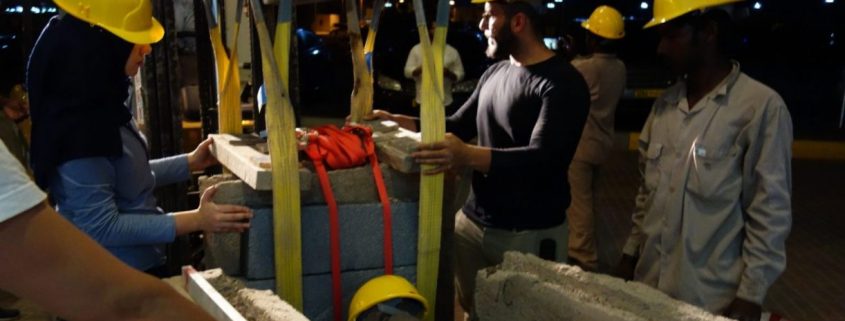
GUtech students and professors built an earthen tower on campus
HALBAN A group of 37 students of the Department of Urban Planning and Architectural Design (UPAD) constructed a tower made of soil excavated from the GUtech campus as part of their ‘integrated semester project’. “The earthen tower which has a height of 2,3 m and weights 3,6 tonnes is an example of both progressive thinking and hands-on applied knowledge. The project was undertaken in order to explore the often under-valued potential of this material. Despite its reputation as an inferior material, raw earth remains one of our oldest buildings materials- one which is not dependant on non-renewable fossil fuels. This in addition to superior passive thermal properties positions earth as a material not only of our past, but also our future,” said Lecturer Wayne Switzer of the Department of Urban Planning and Architectural Design who initiated and supervised the entire project. Wayne Switzer has studied and experienced the construction of earthen buildings in Europe throughout the past years. According to Wayne Switzer the material can be found all over the world, in Switzerland as well as in the Sultanate, thus creating a more energy efficient, completely recyclable and ultimately more sustainable construction material for various places around the world.
Over the course of four weeks, students in their 6th Semester Architecture studies produced 12 prefabricated elements made of rammed earth – overseeing the entire process from mixing, compaction, transportation and placement. Mr. Switzer noted that “the process of prefabrication shows the potential for this centuries-old technique to become viable in our current construction industry. In this way, Architecture students have an in-depth understanding of a material through hands-on experience and experimentation- a knowledge which will assist them significantly if they are to develop buildings in this technique”, adding that students may change their perception of old houses constructed in previous centuries in Oman. “Through architecture we can change the perception of this versatile material and in doing so connect with a rich aspect of Omani culture” said Mr. Switzer. It is the desire of the UPAD department to continue such projects which promote more sustainable, energy-saving building materials.